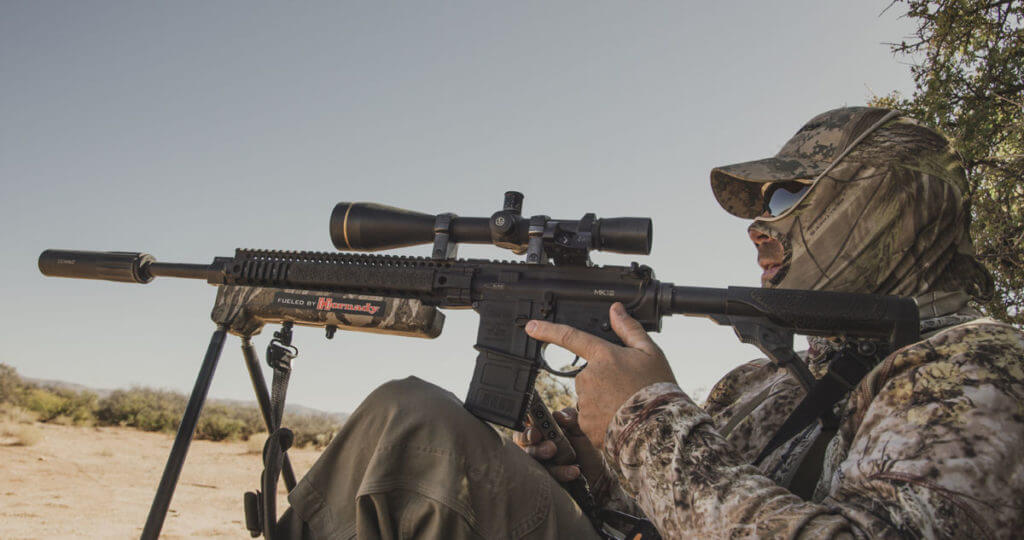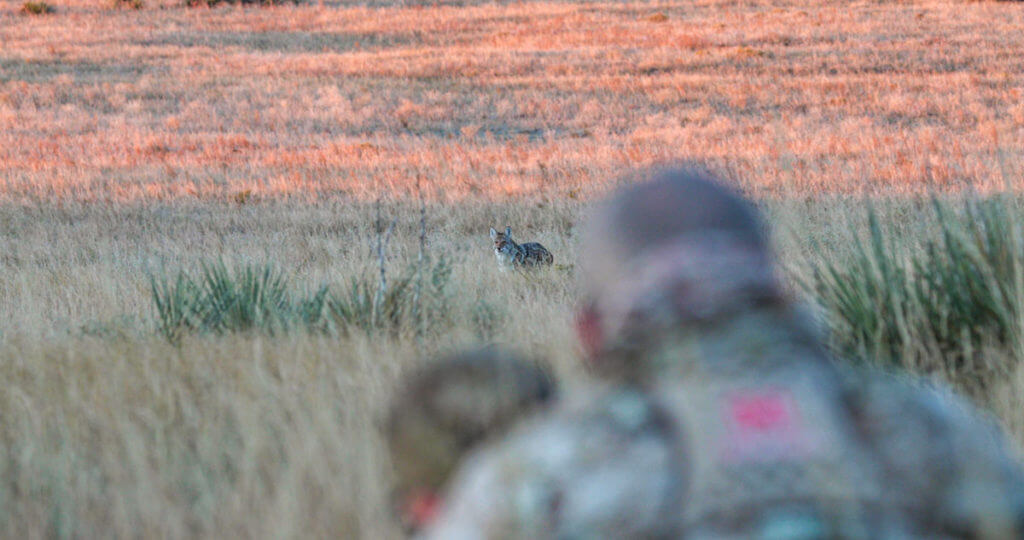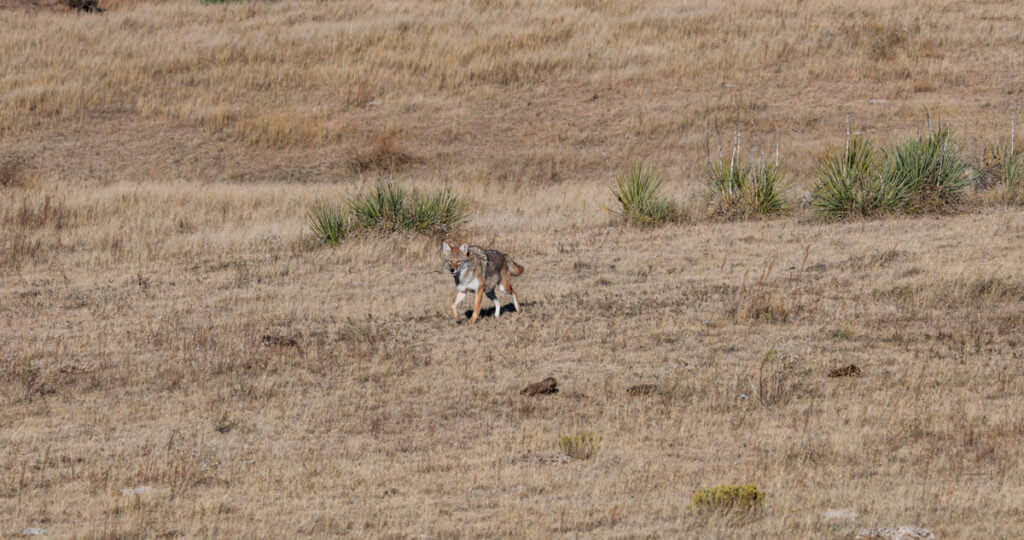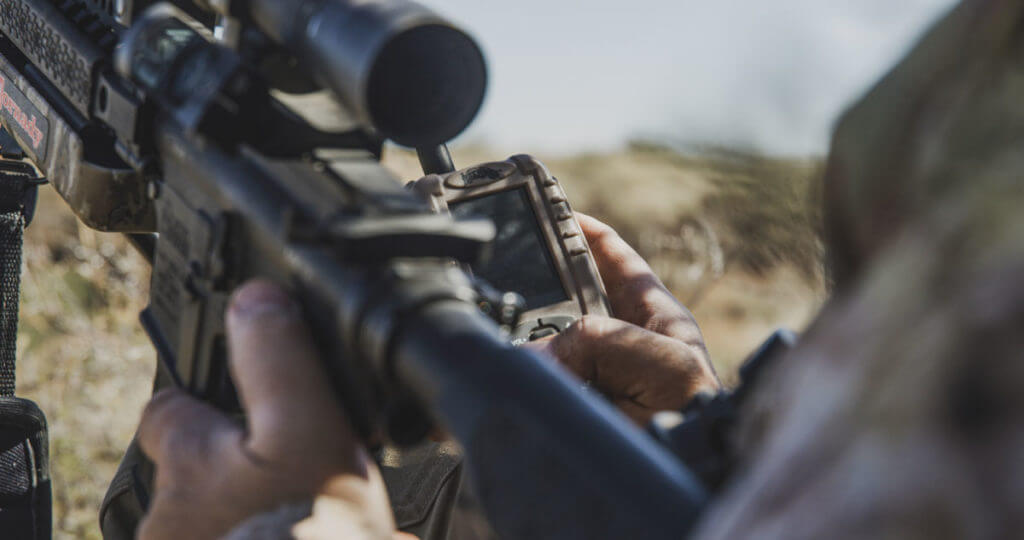
If I’ve learned anything over the last 25 years of coyote hunting, it’s that calling coyotes is a game of probabilities. Being able to weed through all of the variables and make the best-educated guess as to your approach to that stand is often the difference between a successful and unsuccessful hunt. Nothing ever happens the same way every time so being able to make decisions based off of these probabilities is extremely important. Of all of the variables and probabilities, you’ll evaluate, time on a stand is one of the most crucial. Throughout this article, I’ll discuss the importance of time on the stand, the variables involved and how probabilities play an important role in the actual amount of time spent on the stand.
Time on Stand
Of all the variables that make up the coyote calling equation, I would consider how much time you spend on a stand to be one of the top 3 in terms of importance. There is a fine line of efficiency when looking at this variable. Sit on stands too long and you end up wasting valuable time that equates to lost stands at the end of the day. Get up and leave a stand too early and you end up spooking off coyotes that are making a slow approach. The answer to this equation is never the same but being able to evaluate all of the smaller variables involved will help you determine the best guess possible as to how long you should sit on a particular stand.

The Variables
There are a multitude of smaller variables that need to be taken into account when determining how much time to spend on a stand. Time of day, time of year, terrain type, wind speed, overall plan for the day and previous encounters with coyotes that day are all important factors that must be considered. Before I get into actual numbers, let’s look at each of these variables and set some baselines in relation to probabilities.
With time of day, we know that coyotes are generally more active closer to sunrise and sunset. If coyotes are more active, they are more likely to travel farther distances. The farther they are traveling, the more time it will take them to get to the call. During the middle part of the day, coyotes are bedded up which means they are less likely to want to travel farther distances. The baseline for time of day is as follows. During early mornings and late afternoons sit for longer durations and during the middle part of the day sit for shorter durations.

With time of year, we know that coyotes are generally less pressured and the densities are greater early on during the months of September through November. With less pressure and more coyotes, they respond quickly. During the months of December through February, coyotes have experienced maximum pressure and the densities are lower which result in slower or non-existence responses. The baseline for time of year is as follows. During the early months of fall sit for shorter durations and during the later part of winter sit for longer durations.
With terrain type, we know that coyotes living in more open terrain with less vegetation tend to have larger territories. With larger territories, coyotes are more willing to travel farther distances. Coyotes living in rougher, chopped-up terrain with more vegetation tend to have smaller territories. With smaller territories, coyotes are not as willing to travel as far to the call. The baseline for terrain type is as follows. Open terrain with less vegetation sit for longer durations and rougher terrain with more vegetation sit for shorter durations.

We know that with lower wind speeds the sound of the call travels father than if played during higher wind speeds. As the sound travels farther, the chance for a coyote to respond from farther distances is increased. Combine this with the fact that coyotes will generally be more active during lower wind speeds and bedded up during higher wind speeds and we can set a baseline for wind speed. Less wind sit for longer durations and more wind sit for shorter durations.
With the overall plan for the day, you have to evaluate how much ground you have access to hunt and how much of that ground do you want to cover for that day. As a baseline, stand times should be shorter for days when the plan is to cover as much ground as possible and longer for days when you have limited ground to hunt.
With previous coyote encounters that day, you must make a broad assumption that every coyote you will call in the remainder of the day will respond the same way the first coyote did. In regards to a baseline, if the first coyote responded within the first 6 minutes and at a good pace, assume the rest of the coyotes that day will do the same and therefore sit for a shorter duration. A longer duration may be needed if the first coyote of the day showed up past the 6-minute mark and at a slower pace.
Using Probability to Establish a Timeline
After looking at the variety of variables that affect time on stand and their established baselines, let’s get into specific amounts of time to sit. In order to understand this concept to its fullest, we need to look at just how long it really takes a coyote to respond to the call if you’ve played a sound they are reacting to. A coyote traveling at 10 mph, which is equivalent to a slow trot, can travel 1 mile in 6 minutes. We must assume that a 10 mph trot is the average speed to which a coyote responds to the call. If 100 coyote hunters were polled and asked how long into the stand the last 10 coyotes they called in showed up, the results would be definitive. If this data was plotted out on a graph, it would more than likely produce a bell-shaped curve with the peak being somewhere around the 4-minute mark. From these 2 pieces of information, we can assume that a majority of the coyotes called-in are responding from less than ¾ of a mile away and the probability of them showing up is greatest between the 3-5 minute mark. The last piece of this equation deals with understanding that different sounds have different effects on coyotes and the pace as to which they respond. If a sound is playing that a coyote is reacting to, they should be visible within 3-5 minutes based off of the assumption above. Therefore the baseline for the length of time playing a sound is 5 minutes. After the 5 minute mark, a different sound is selected and the clock is reset.

Using this baseline of 5 minutes, we can now start to layout a timeframe of how long we should spend on stand as long as we consider the other variables and their baselines discussed earlier. For stands that you’ve determined the need to be on the shorter end, the baseline will be 10 minutes or 2 different sounds at 5 minutes apiece. For stands that you’ve determined the need to be on the longer end, the baseline will be 20 minutes or 4 different sounds at 5 minutes apiece. These same stands made with adjustments from variables like time of day, time of year, wind speed, etc. may look different due to the baselines we established earlier. For shorter stands, you may elect to play 2 different sounds at 3 minutes apiece. For longer stands, you may elect to play 4 or more different sounds at 6 minutes apiece. Keep in mind these are baseline starting points and adjustments may need to be made based off of all the different variables involved.
Time on the stand is a crucial part of the coyote calling equation and making adjustments throughout the season and even the day is critical for steady success. Being able to make calculations based off of probabilities is not something that is easily mastered, especially when nothing is absolute with calling coyotes. But by understanding all of the variables involved and how they relate to the actual amount of time spent on a stand, it’s only a matter of time until you will start calling coyotes like clockwork!